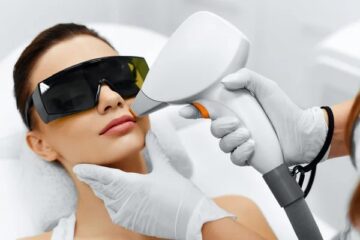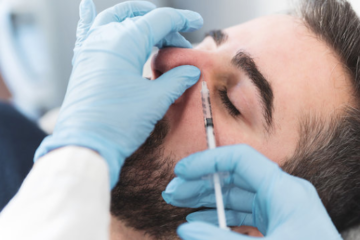What you eat directly fuels collagen production, hydration levels, and inflammation control – all critical for maintaining firm, radiant skin. Meanwhile, deep, restorative sleep triggers overnight cellular repair and rebalances stress hormones that can otherwise accelerate fine lines and dullness. Chronic poor sleep skin damage often shows up as uneven tone, under-eye bags, or breakouts, while a consistent diet for glowing skin rich in antioxidants and healthy fats can visibly turn back the clock.
Table of Contents
- How Diet Directly Influences Skin Aging
- Sleep’s Role in Skin Repair & Renewal
- Beyond Lifestyle: When to Consider Professional Support
- Final Takeaways: Glow From Within, Sustain It Long-Term
It’s 7 a.m., you’re squinting in the bathroom mirror, and there it is – puffiness that wasn’t there yesterday, a new shadow under your eyes, or that stubborn dry patch near your cheekbone. You didn’t change your moisturizer. You didn’t get extra sun. So what happened? Chances are, it’s not your skincare failing you – it’s your plate or your pillow.
For those navigating persistent concerns despite solid lifestyle habits, exploring non-surgical cosmetic procedures can offer targeted support to restore balance and confidence. A steady diet for healthy skin isn’t about restriction – it’s about strategic nourishment. And prioritizing sleep for skin health isn’t just “beauty rest” folklore – it’s science-backed cellular maintenance.
How Diet Directly Influences Skin Aging
What you eat doesn’t just fuel your body – it builds, repairs, and protects your skin. The connection between diet for skin and visible aging is no longer theoretical; it’s biochemically proven. Nutrients from food act as co-factors in collagen synthesis, antioxidant defence, and inflammation regulation – all critical processes that determine whether your skin looks resilient or ravaged by time.
Ignoring dietary influence is like trying to paint a masterpiece with dried-up brushes. Even the most expensive serums can’t compensate for internal nutrient deficiencies or chronic inflammation triggered by poor food choices. Let’s break down exactly how your plate shapes your reflection.
Key Nutrients Your Skin Craves Daily
Your skin thrives on specific micronutrients that most Canadians aren’t getting enough of. Here’s what to prioritize:
- Vitamin C: Essential for collagen formation. Found in bell peppers, strawberries, and broccoli.
- Omega-3 fatty acids: Reduce inflammation and support skin barrier function. Best sources: wild salmon, flaxseeds, walnuts.
- Zinc: Heals breakouts and regulates oil production. Pumpkin seeds, lentils, and grass-fed beef are solid choices.
- Vitamin E: Works with vitamin C to neutralize free radicals. Almonds, sunflower seeds, and avocado deliver it well.
- Polyphenols: Plant compounds that fight glycation (a process that stiffens collagen). Green tea, dark chocolate, and berries are rich in them.
Aim to include at least three of these daily. Consistency matters more than perfection.
Worst Foods That Accelerate Aging
Not all calories are created equal – especially when it comes to skin. Certain foods trigger inflammation, insulin spikes, and oxidative stress, all of which speed up wrinkle formation and dullness.
Avoid or minimize:
- Refined sugars and syrups: spike insulin, which breaks down collagen.
- Fried foods: create advanced glycation end-products (AGEs) that stiffen skin.
- Processed meats: high in sodium and preservatives that dehydrate and inflame.
- Alcohol: depletes vitamin A and disrupts sleep quality, compounding skin stress.
Still, sensitivity varies. Track your skin’s response – not just the ingredient list.
Sample Daily Meal Plan for Radiant Skin
You don’t need a radical overhaul. Small, sustainable swaps make the biggest difference. Here’s a realistic one-day plan of foods for healthy skin:
- Breakfast: Overnight oats with chia seeds, blueberries, and almond butter.
- Lunch: Grilled salmon salad with spinach, avocado, pumpkin seeds, and olive oil dressing.
- Snack: Green tea + a square of 85% dark chocolate.
- Dinner: Stir-fried tofu with broccoli, red bell peppers, turmeric, and brown rice.
- Dessert (optional): Sliced pear with a sprinkle of cinnamon.
This diet for glowing skin delivers collagen co-factors, essential fatty acids, and anti-inflammatory compounds – without being restrictive or gourmet.
Sleep’s Role in Skin Repair & Renewal
While diet lays the nutritional foundation, sleep is when your skin actually rebuilds itself. Think of it as your body’s nightly maintenance shift – a non-negotiable window where cellular turnover peaks, inflammation is dialled down, and collagen production surges. Miss this window consistently, and you’re not just tired – you’re accelerating visible aging.
What Happens to Your Skin Overnight
Between 10 p.m. and 2 a.m., your skin enters its peak recovery mode. Here’s the science-backed breakdown:
- Cell turnover accelerates: old, damaged cells are shed; new ones rise to the surface.
- Hydration rebalances: transepidermal water loss decreases, helping skin retain moisture.
- Cortisol drops: stress hormone levels fall, reducing inflammation and redness.
- Collagen synthesis increases: fibroblasts work overtime to rebuild structural proteins.
This is why “beauty sleep” isn’t a myth – it’s biology. One study found that participants who slept less than six hours per night showed twice the signs of skin aging compared to those sleeping seven to nine hours.
How Poor Sleep Skin Damage Manifests

Chronic sleep deprivation doesn’t just leave you groggy – it etches itself onto your face. Common signs of poor sleep skin include:
- Persistent under-eye darkness and puffiness (due to sluggish lymphatic drainage).
- Dull, ashy complexion (from reduced blood flow and cell renewal).
- Increased fine lines (from elevated cortisol breaking down collagen).
- Breakouts and sensitivity (due to impaired barrier function and inflammation).
- Uneven skin tone (from disrupted melanin regulation).
Unlike temporary dehydration or seasonal dryness, poor sleep causes skin damage to accumulate. It becomes structural – not just superficial. And no amount of concealer can mask what’s happening beneath the surface.
Creating a Sleep-Friendly Night Routine
You can’t force deep sleep – but you can create the conditions for it. Here’s how to optimize your evenings for skin recovery:
- Set a consistent bedtime: even on weekends. Your skin thrives on rhythm.
- Dim lights after 8 p.m.: blue light suppresses melatonin, delaying sleep onset.
- Avoid heavy meals and alcohol 3 hours before bed: digestion and dehydration disrupt sleep cycles.
- Cool your bedroom: the ideal sleep temperature is between 18–20°C.
- Apply a nourishing night cream: look for ceramides, peptides, or bakuchiol to support overnight repair.
- Practice 5 minutes of breathwork or gentle stretching: lowers cortisol and signals safety to your nervous system.
Track your sleep with a simple journal for two weeks. Note skin changes – you’ll likely see a direct correlation between sleep quality and morning radiance.
Beyond Lifestyle: When to Consider Professional Support
Even with excellent foods for healthy skin and consistent sleep for skin health, some signs of aging may persist due to genetics, environmental exposure, or natural collagen decline over time. When lifestyle habits have been optimized but certain concerns remain – such as deep wrinkles, volume loss, or stubborn pigmentation – it may be appropriate to explore clinical options that complement your wellness efforts.
Before pursuing any treatment, consider these steps:
- Consult a qualified provider who assesses your skin holistically.
- Discuss realistic outcomes based on your age, skin type, and goals.
- Ensure the clinic uses Health Canada–approved technologies and products.
- Prioritize safety and customization over trends or aggressive marketing.
When used thoughtfully, professional support can bridge the gap between what lifestyle delivers and what your skin truly needs to look refreshed, balanced, and vibrant.
Final Takeaways: Glow From Within, Sustain It Long-Term
Your skin’s aging story isn’t written in stone – it’s shaped daily by the food you choose, the hours you rest, and the care you extend to yourself. A diet for glowing skin isn’t about perfection; it’s about consistency – loading your plate with colour, healthy fats, and antioxidants that defend against cellular decay. Sleep for skin health isn’t a luxury; it’s a biological necessity – the nightly reset that rebuilds collagen, calms inflammation, and restores luminosity.
Start small. Sleep an extra 30 minutes. Swap one processed snack for a handful of walnuts or berries. Track how your skin responds. Over time, these micro-shifts compound into a visible transformation. And when you’re ready to explore what’s next, remember – true beauty enhancement begins with understanding your skin’s needs, not masking them.



